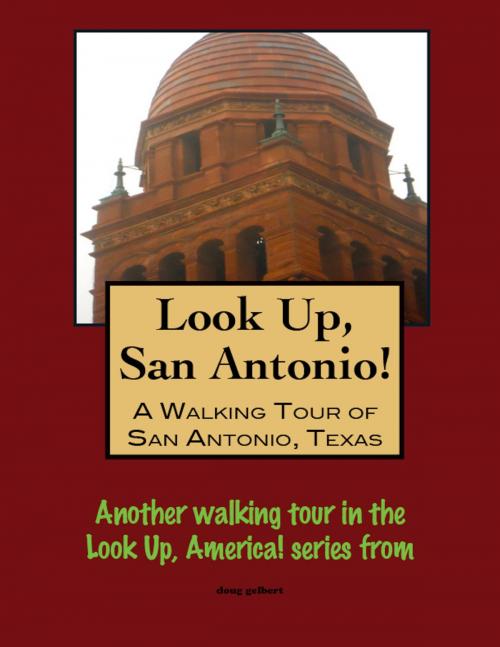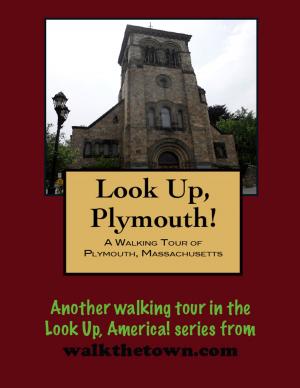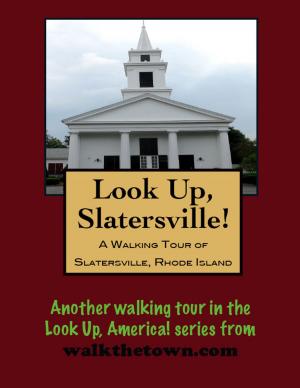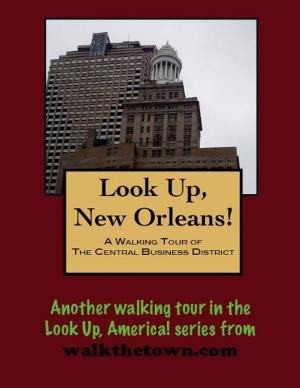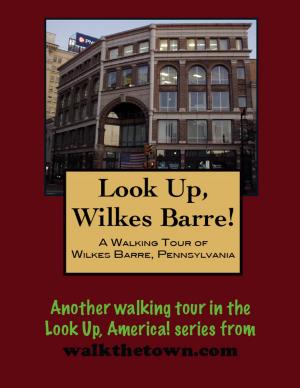| Author: | Doug Gelbert | ISBN: | 9781301041510 |
| Publisher: | Doug Gelbert | Publication: | June 13, 2013 |
| Imprint: | Smashwords Edition | Language: | English |
| Author: | Doug Gelbert |
| ISBN: | 9781301041510 |
| Publisher: | Doug Gelbert |
| Publication: | June 13, 2013 |
| Imprint: | Smashwords Edition |
| Language: | English |
There is no better way to see America than on foot. And there is no better way to appreciate what you are looking at than with a walking tour. Whether you are preparing for a road trip or just out to look at your own town in a new way, a downloadable walking tour from walkthetown.com is ready to explore when you are.
Each walking tour describes historical and architectural landmarks and provides pictures to help out when those pesky street addresses are missing. Every tour also includes a quick primer on identifying architectural styles seen on American streets.
It all begins with the river. The meandering, cottonwood-shaded, unhurried river that takes 15 miles to traverse about six miles of San Antonio downtown real estate. Payaya Indians settled along its banks for thousands of years and Spanish explorers and missionaries were pulled to its waters when they began arriving in the 1690s and named the place after Saint Anthony of Padova in Italy.
The settlement became a natural military center and in 1718 the first of five Spanish missions was established around the San Antonio River. It was called Mission San Antonio de Valero and would later be remembered as the Alamo, a nickname started by the Mexicans gleaned from the surrounding cottonwoods that it would acquire after the mission system was abandoned in the 1790s. The missions were consolidated into San Antonio de Bexar, the capital of Texas Province.
The Mexicans and Spanish tussled over this land until the Mexicans secured independence from Spain in 1821. The new Mexican government at first encouraged American settlement but it wasn't long before these new arrivals to the province of Texas were agitating for their own independence, especially after newly elected Mexican President Antonio Lopez de Santa Anna rescinded the Mexican Constitution in 1833. Kentuckian Benjamin Milam led a contingent of Texans to capture San Antonio in December of 1835 but leader of the Texas Rebellion, Sam Houston, didn't believe the capital could be held and called for the rebel forces to flee San Antonio.
The volunteers, with such now legendary names as James Bowie and Davy Crockett, under the leadership of 26-year old William Barrett Travis thought otherwise. Somewhere between 182 and 257 Anglo and Hispanic Texans fortified the Alamo mission and made a stand against some 1,500 Mexican invaders who arrived under Santa Anna on February 23. After a twelve-day siege the Mexicans stormed the mission on March 6, 1835 and all the defenders were killed or captured and executed.
In the aftermath of the Battle of the Alamo its defenders were martyred, Texas gained its independence the following month and became part of the United States a decade later, the mission was preserved in the center of the city which became the largest in the state for the rest of the century, San Antonio got a nickname and Texas got its best-known and most-visited tourist attraction. And that is where our walking tour will begin...
There is no better way to see America than on foot. And there is no better way to appreciate what you are looking at than with a walking tour. Whether you are preparing for a road trip or just out to look at your own town in a new way, a downloadable walking tour from walkthetown.com is ready to explore when you are.
Each walking tour describes historical and architectural landmarks and provides pictures to help out when those pesky street addresses are missing. Every tour also includes a quick primer on identifying architectural styles seen on American streets.
It all begins with the river. The meandering, cottonwood-shaded, unhurried river that takes 15 miles to traverse about six miles of San Antonio downtown real estate. Payaya Indians settled along its banks for thousands of years and Spanish explorers and missionaries were pulled to its waters when they began arriving in the 1690s and named the place after Saint Anthony of Padova in Italy.
The settlement became a natural military center and in 1718 the first of five Spanish missions was established around the San Antonio River. It was called Mission San Antonio de Valero and would later be remembered as the Alamo, a nickname started by the Mexicans gleaned from the surrounding cottonwoods that it would acquire after the mission system was abandoned in the 1790s. The missions were consolidated into San Antonio de Bexar, the capital of Texas Province.
The Mexicans and Spanish tussled over this land until the Mexicans secured independence from Spain in 1821. The new Mexican government at first encouraged American settlement but it wasn't long before these new arrivals to the province of Texas were agitating for their own independence, especially after newly elected Mexican President Antonio Lopez de Santa Anna rescinded the Mexican Constitution in 1833. Kentuckian Benjamin Milam led a contingent of Texans to capture San Antonio in December of 1835 but leader of the Texas Rebellion, Sam Houston, didn't believe the capital could be held and called for the rebel forces to flee San Antonio.
The volunteers, with such now legendary names as James Bowie and Davy Crockett, under the leadership of 26-year old William Barrett Travis thought otherwise. Somewhere between 182 and 257 Anglo and Hispanic Texans fortified the Alamo mission and made a stand against some 1,500 Mexican invaders who arrived under Santa Anna on February 23. After a twelve-day siege the Mexicans stormed the mission on March 6, 1835 and all the defenders were killed or captured and executed.
In the aftermath of the Battle of the Alamo its defenders were martyred, Texas gained its independence the following month and became part of the United States a decade later, the mission was preserved in the center of the city which became the largest in the state for the rest of the century, San Antonio got a nickname and Texas got its best-known and most-visited tourist attraction. And that is where our walking tour will begin...
